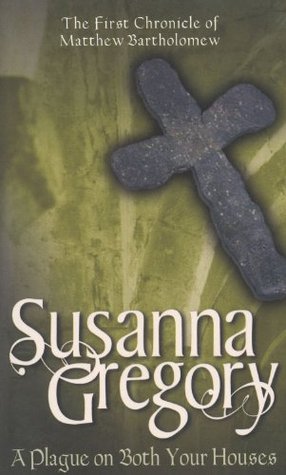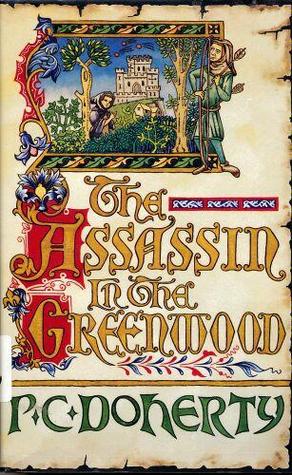
Review of A Plague on Both Your Houses by Susanna Gregory, the first chronicle of Matthew Bartholomew set in 14th century Cambridge.

This post may contain affiliate links, which means I may receive a commission, at no extra cost to you, if you make a purchase through a link. Please see our full disclosure for further information.
Synopsis
After the body of Sir John Babington, Master of Michaelhouse, is found spinning on Cambridge’s millwheel, he is thought to have committed suicide. Then several more Michaelhouse residents die and Dr Matthew Bartholomew becomes suspicious. However, the Bishop is called in to review the deaths and gives orders to cover-up any scandal.
At the same time, rumours circulate that Oxford University is trying to close the competing university at Cambridge by creating problems between town and gown. Then, the plague arrives in Cambridge and all Bartholomew’s time is consumed with treating the dwindling populace.
During the ensuing mess, a woman goes missing and men make surprising confessions. This leads Bartholomew to search out information that puts his life in danger from the men responsible for the earlier deaths.
Review
A Plague on Both Your Houses is a fantastic black-death-era mystery. Sure, the Death may have distracted me (and the characters) from the mystery for a bit, but it became an important part of the story. The book was sprinkled with historical details and interesting information, particularly about the plague.
The story is extremely convoluted and intricate. There are twists and turns in the (very complicated and eventful) mystery with a plot within a plot and dangerous encounters. Even Bartholomew gets confused about what’s going on. Then there’s a disappearance that might be related to the original plots/murders but turns out to be unrelated. I found the “let’s summarise what we know” bits completely necessary.
Very few of the characters are fleshed out enough that I could care about them. Add to that the vast number of minor characters and a character list would have been helpful. There were some characters that appeared early on and then again towards the end, by which time I had forgotten who they were. However, I was gripped by trying to work out which characters were good, and which were bad.
I liked Bartholomew. He’s intelligent, a bit naïve, and genuinely shocked at other people’s deviousness. I loved reading about him trying to deal with the plague and how selfless he was. Bartholomew’s student, Gray, provided a nice contrast to emphasise these qualities.
Gray followed him from house to house carrying the heavy bag that contained Bartholomew’s instruments and medicines. Bartholomew could feel the student’s disapproval as he entered the single-roomed shacks that were home to families of a dozen. The only patient of which Gray did not disapprove was the wife of a merchant. She was one of the few cases with which Bartholomew had had success, and was lying in a bed draped with costly cloths, tired, but still living. The grateful merchant pressed some gold coins into Bartholomew’s hand. Bartholomew wondered whether they would be sufficient to bribe people to drive the carts that collected the dead.
Conclusion
Have you read A Plague on Both Your Houses? What did you think? Do you agree with what I’ve said about it? Let me know in the comments.

